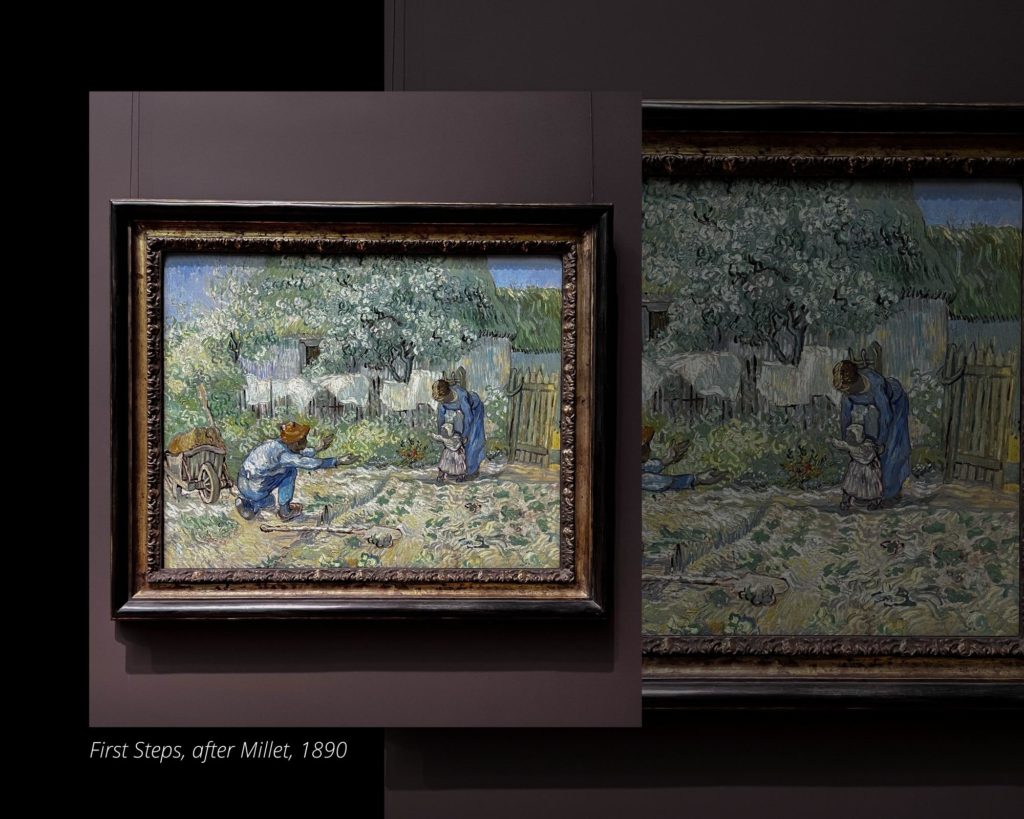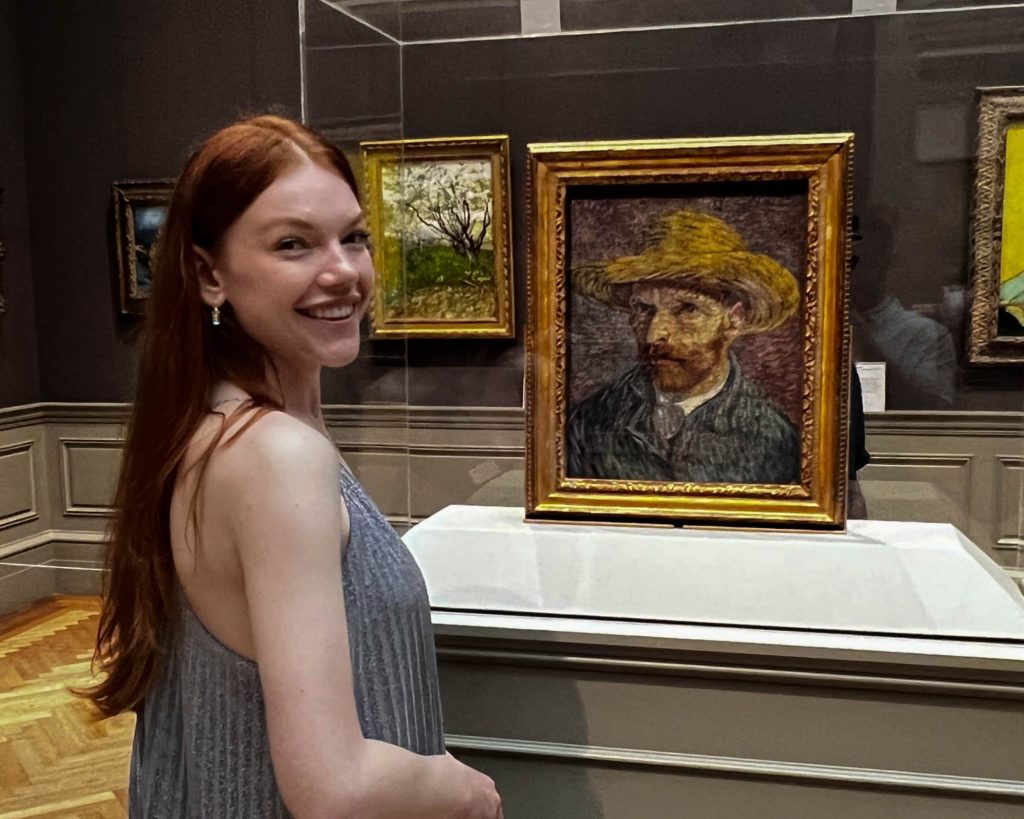For the first time in several years, all sixteen of MET’s department’s paintings by Vincent van Gogh—the largest collection of his work on this side of the Atlantic—are in-house and on view in the galleries for nineteenth-century European paintings. Visitors can enjoy highlights from the artist’s prolific years in France, including portraits, still lifes, and landscapes. These masterpieces are often committed to exhibitions around the world, making this a not-to-be-missed occasion. Be sure to catch all of them as you walk through galleries 822 and 825.
Self-Portrait with a Straw Hat (obverse: The Potato Peeler), 1887
Van Gogh produced more than twenty self-portraits during his Parisian sojourn (1886–88). Short of funds but determined nevertheless to hone his skills as a figure painter, he became his own best sitter: “I purposely bought a good enough mirror to work from myself, for want of a model.” This picture, which shows the artist’s awareness of Neo-Impressionist technique and color theory, is one of several that are painted on the reverse of an earlier peasant study
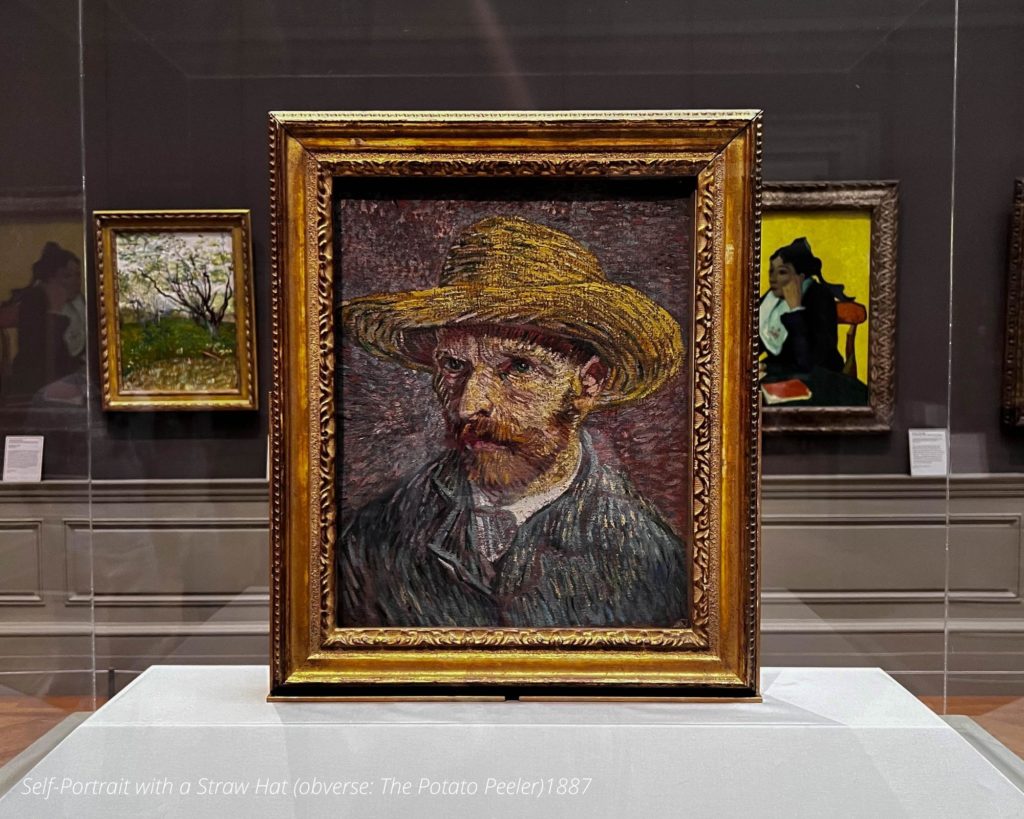
L’Arlésienne: Madame Joseph-Michel Ginoux (Marie Julien, 1848-1911)
While in Arles, Van Gogh painted two very similar portraits of Marie Ginoux, the proprietress of the Café de la Gare, wearing the regional costume of the legendary dark-haired beauties of Arles. The first version, which he described in a letter of November 1888 as “an Arlésienne . .. knocked off in one hour, ” must be the more thinly and summarily executed portrait in the Musée d’Orsay, Paris. In it, a parasol and gloves lie on the table instead of books. This portrait belonged to the sitter until she sold it in 1895.
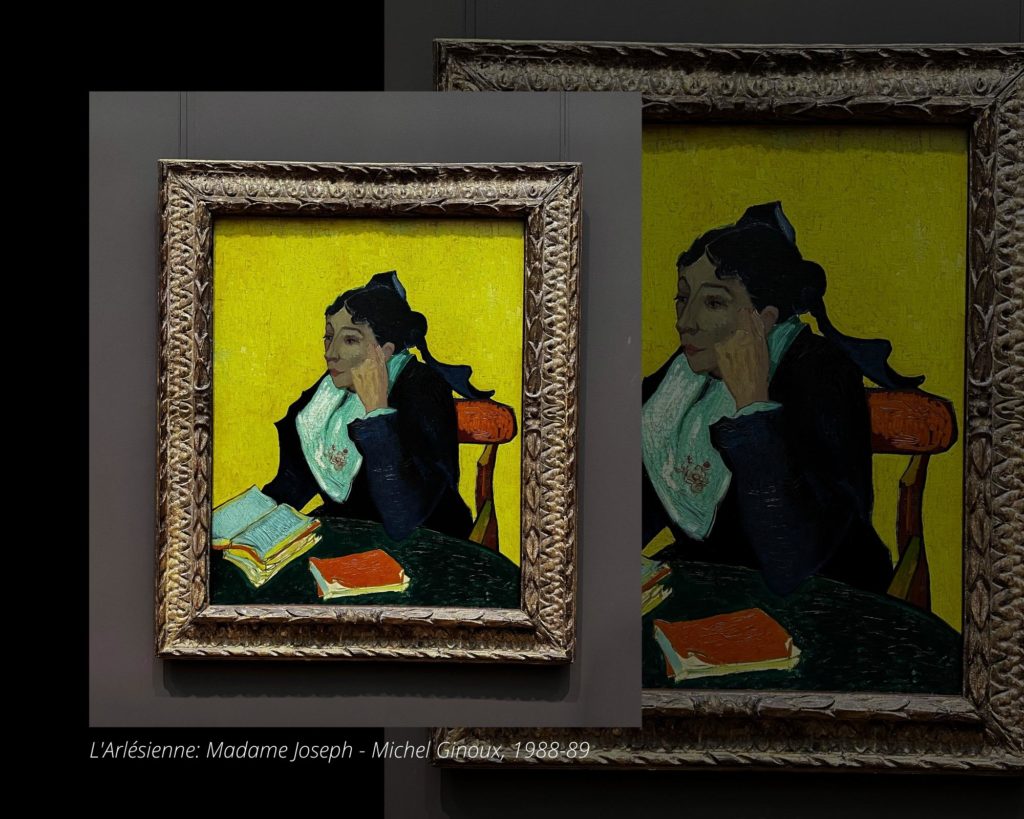
The Flowering Orchard, 1888
The arrival of spring in Arles in 1888 found Van Gogh “in a fury of work.” As he wrote to his brother Theo, “the trees are in blossom and I would like to do a Provençal orchard of tremendous gaiety.” Between late March and late April, the artist dedicated fourteen canvases to the subject, working in a range of sizes, or formats, and styles. This composition, dominated by the angular, clongated branches of the budding trees, attests to Van Gogh’s admiration for Japanese prints His inclusion of the scythe and rake makes this one of only two orchard paintings to hint at a human presence.
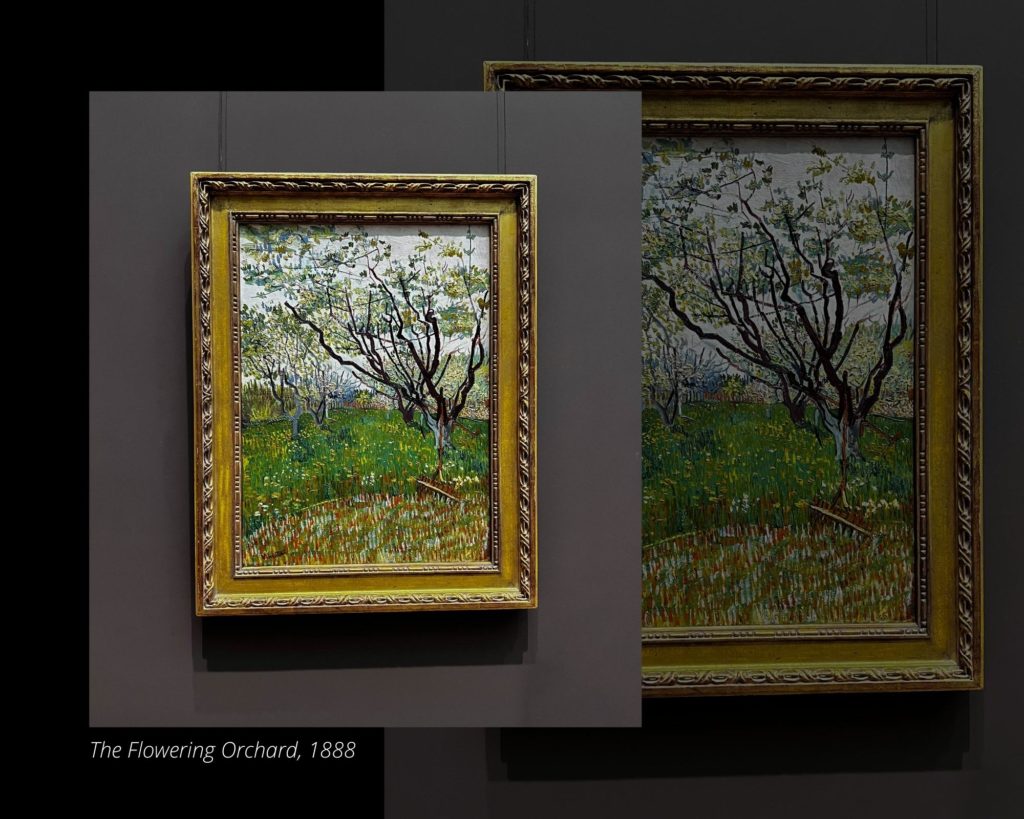
Cypresses, 1889
Cypresses was painted in late June 1889, shortly after Van Gogh began his yearlong stay at the asylum in Saint-Rémy. The subject, which he found “beautiful as regards lines and proportions, like an Egyptian obelisk,” both captivated and challenged the artist: “It’s the dark patch in a sun-drenched landscape, but it’s one of the most interesting dark notes, the most difficult to hit off exactly that I can imagine.” One of two close-up views of the “very tall and massive” trees in a vertical format (the other is in the Kröller-Müller Museum, Otterlo), Cypresses was shown in the 1890 Salon des Indépendants.
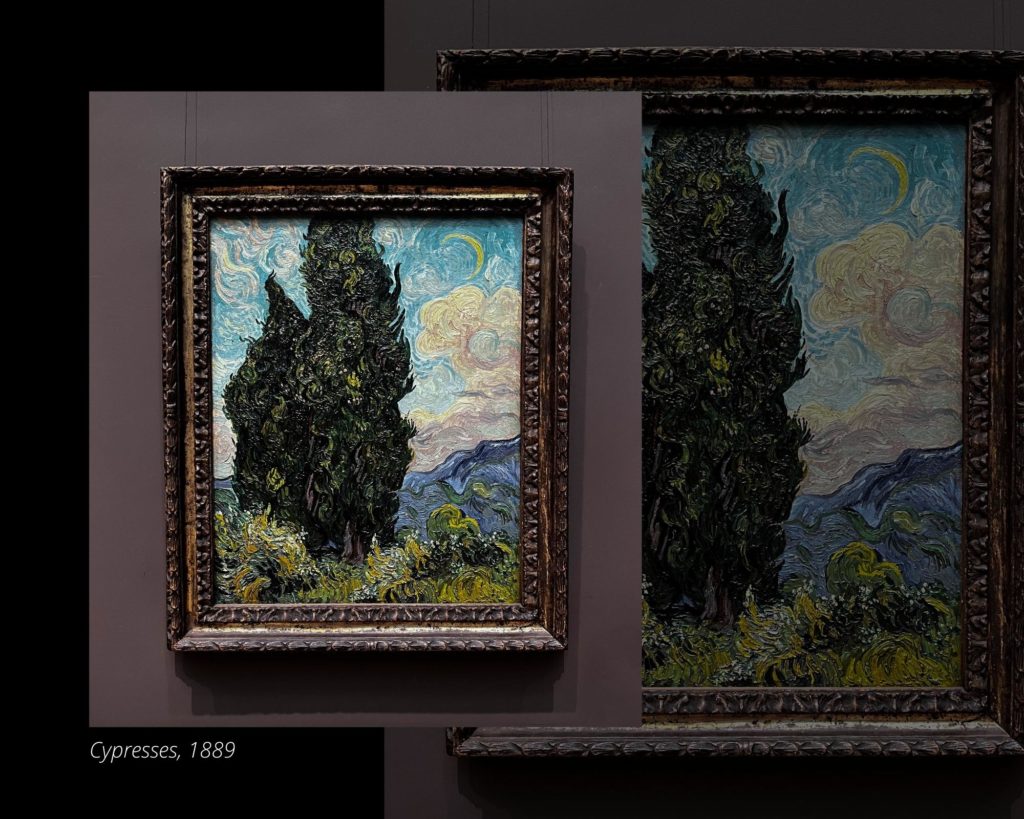
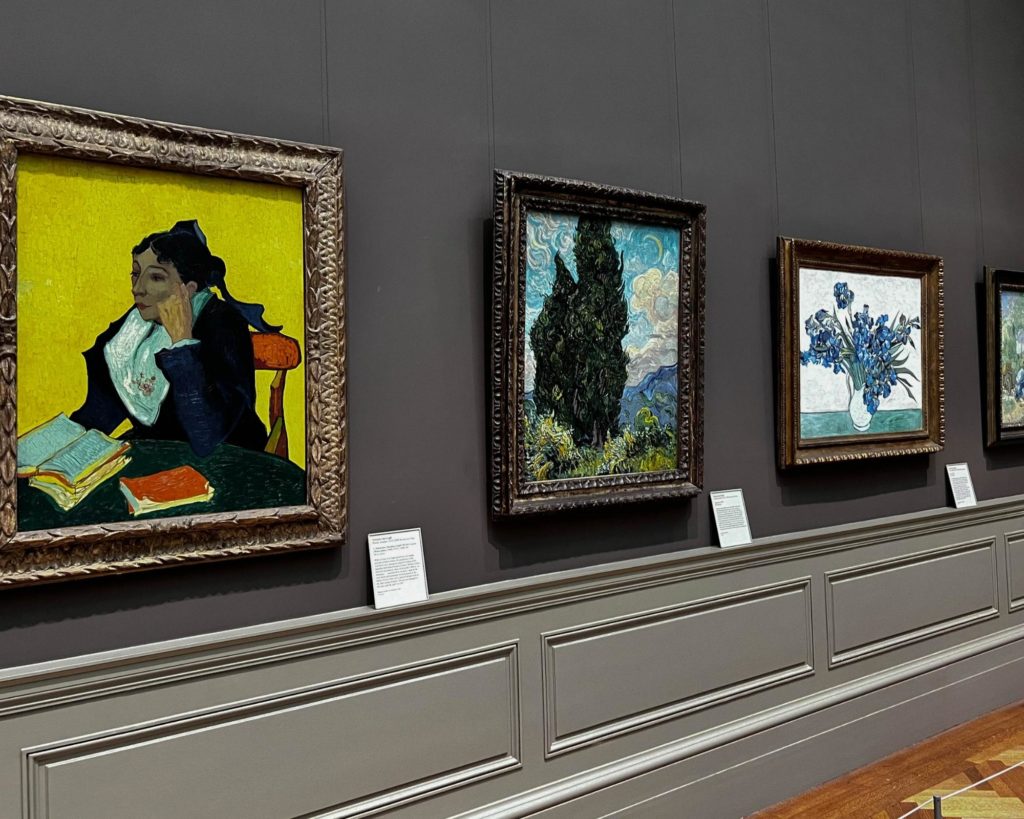
Oleanders, 1888
For Van Gogh, oleanders were joyous, life-affirming flowers that bloomed “inexhaustibly” and were always “putting out strong new shoots.” In this painting of August 1888 the flowers fill a majolica jug that the artist used for other still lifes made in Arles. They are symbolically juxtaposed with Émile Zola’s La joie de vivre, a novel that Van Gogh had placed in contrast to an open Bible in a Nuenen still life of 1885.
Irises, 1890
In May 1890, just before he checked himself out of the asylum at Saint-Rémy, Van Gogh painted four exuberant bouquets of spring flowers, the only still lifes of any ambition he had undertaken during his yearlong stay: two of irises, two of roses, in contrasting color schemes and formats. In the Museum’s Irises he sought a “harmonious and soft” effect by placing the “violet” flowers against a “pink background,” which have since faded owing to his use of fugitive red pigments. Another work from this series, Roses (1993.400.5), hangs in the adjacent gallery. Both were owned by the artist’s mother until her death in 1907.
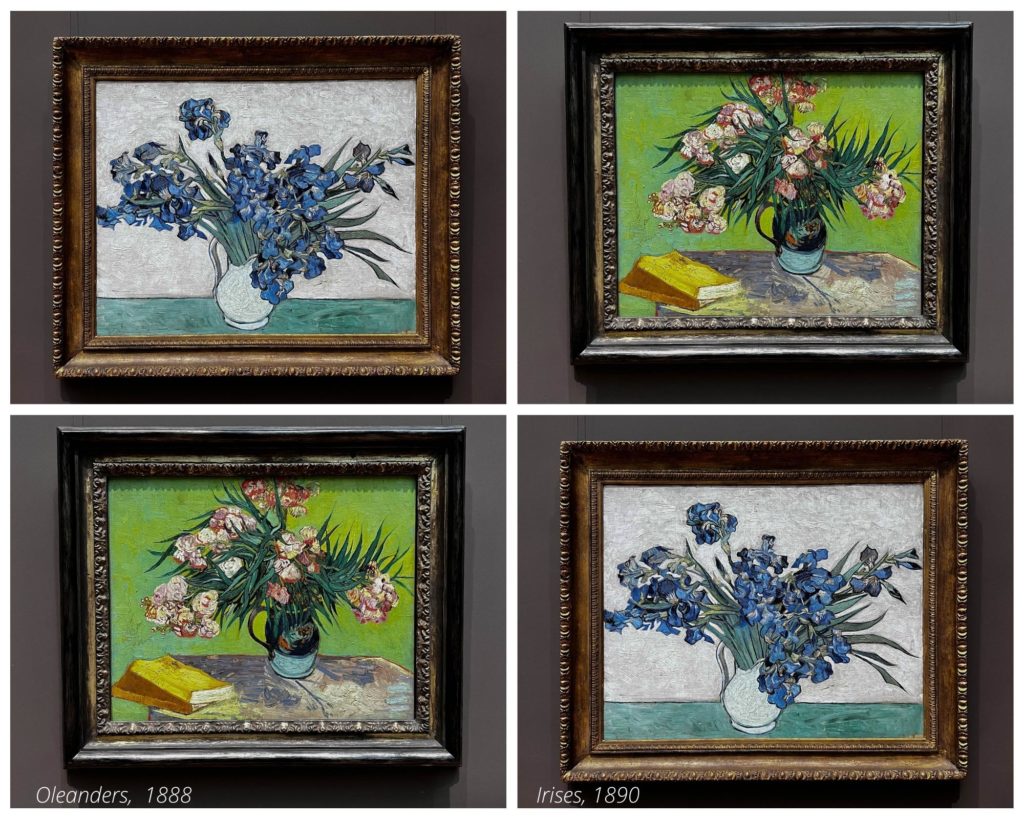
Sunflowers, 1887
Van Gogh painted four still lifes of sunflowers in Paris in late summer 1887. There is an oil sketch for this picture (Van Gogh Museum, Amsterdam) as well as another painting of two sunflowers also signed and dated 1887 (Kunstmuseum Bern), and a larger canvas showing four sunflower heads (Kröller-Müller Museum, Otterlo). Paul Gauguin acquired the two smaller works, and until the mid-1890s, when he sold his most prized possessions to finance his South Seas voyage, they held pride of place above the bed in his Paris apartment.
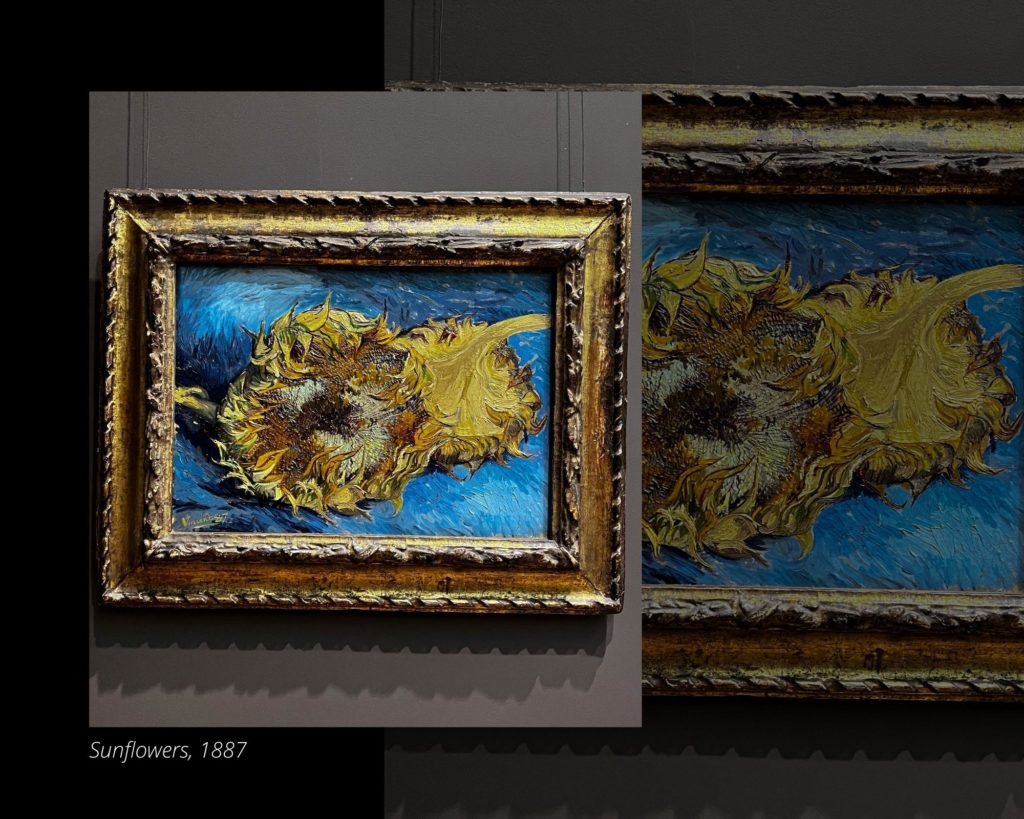
First Steps, after Millet, 1890
In fall and winter 1889-90, while a voluntary patient at the asylum in Saint-Rémy, Van Gogh painted twenty-one copies after Millet, an artist he greatly admired. He considered his copies “translations” akin to a musician’s interpretation of a composer’s work. He let the black-and-white images–whether prints, reproductions, or, as here. a photograph that his brother, Theo, had sent-pose “as a subject,” then he would “improvise color on it.” For this work of January 1890, Van Gogh squared-up a photograph of Millet’s First Steps and transferred it to the canvas.
